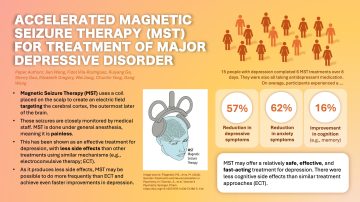Magnetic Seizure Therapy (MST) can Treat Depression by Changing the Structure and Function of our Brains
Magnetic Seizure Therapy (MST) is similar to rTMS: it is a safe, painless, effective, and non-invasive way to treat even severe depression that hasn’t improved with antidepressants. MST also uses a device placed on the scalp to deliver a magnetic field that disrupts the brain’s electrical activity. However, MST is stronger. In fact, it is intended to elicit a closely-monitored seizure that is then thought to rewire the brain for the better. The researchers of the current study were wondering if changes in the brain structure (size) and function (activity) were related to improvements in depression after MST.
Accelerated magnetic seizure therapy (aMST) for treatment of major depressive disorder: A pilot study
Electroconvulsive therapy (ECT) is often the recommendation for severe and treatment-resistant depression. However, treatments need to be spaced out over long periods of time to prevent cognitive side effects. Magnetic seizure therapy (MST) uses magnetic—not electrical—stimulation to similarly treat depression. Because of its unique approach and less side effects when compared to ECT, researchers wonder if MST treatments can be safely and effectively accelerated to reduce treatment time.

